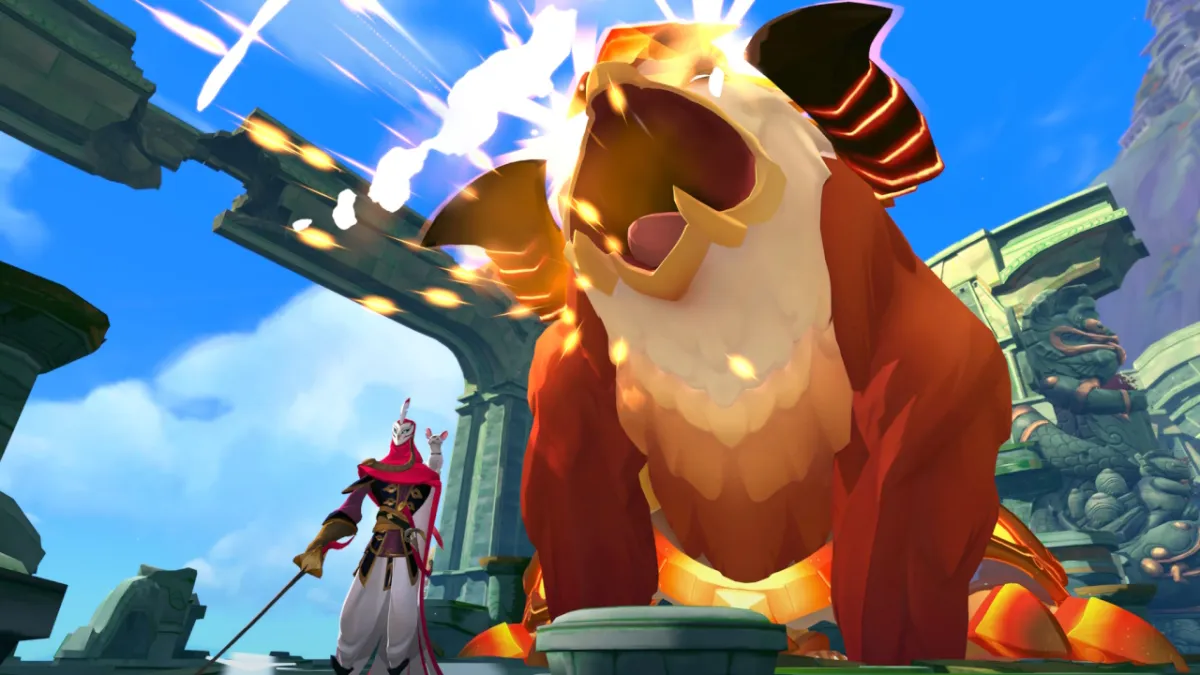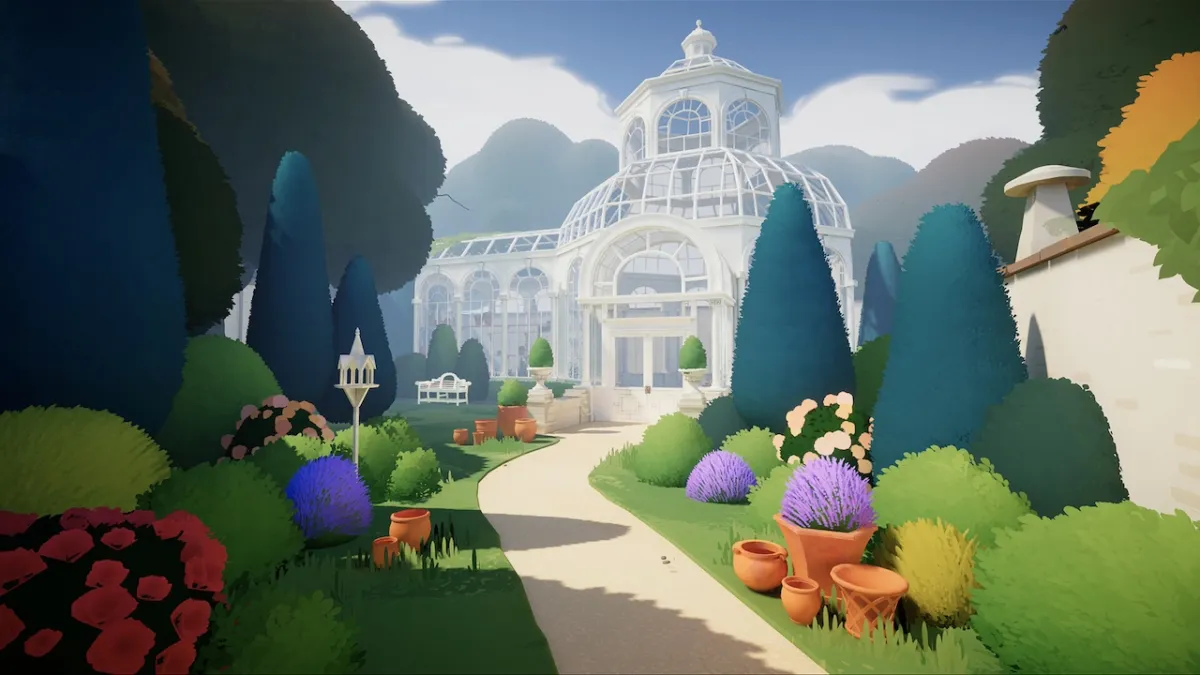It’s rare for 1980s ‘one hit wonder’ Martika to be relevant to a videogame review, but “The battle rages on / For toy soldiers” is as succinct a summary of this follow-up to Signal Studios’ Toy Soldiers as any. Cold War is the big, explosive action-movie sequel to its Great War-based predecessor and takes the plastic fight to locations around the globe (with one or two liberties being taken along the way).
As was the case in the original game, Toy Soldiers: Cold War (TS:CW) is a tower defence title that actually spends a lot more time being a third-person shooter. Waves of enemy forces (in this case, hordes of stereotypical Commies) are periodically launched across bedroom battlefields cluttered with discarded cassettes and playing cards, with the sole intent of reaching and damaging your toy box base. Your mission is to protect the box and destroy as many encroaching foes as possible.
To achieve this, you can deploy different styles of turret (machine gun, anti-tank, anti-aircraft and so on) at specific points on the battlefield. This costs money but, aside from early moments in a few missions, you’ll likely be storing up a fair old wodge of change from gunning (or perhaps melting) down your plastic opponents. Turrets can also be upgraded (though some upgrades are locked until certain campaign missions are completed) to give them even greater powers of destruction.
These turrets will happily fire upon the enemy on their own but are, to be honest, not all that reliable. To really get the job done, you need to hop inside one (at which point the view switches from a battlefield overhead to third-person) and start blazing away in person. As TS:CW throws more difficult levels at you, it becomes almost inevitable that you’ll be spending most of your time inside a turret or one of the battery-powered vehicles certain missions give you access to.
Each of these vehicles has a neat nod to their toybox origins, be it a small wind-up mechanism on the side or a remote-control antenna, and a limited amount of battery juice. Extra battery charges are sometimes dotted around the field, but once the power has run down the vehicle is returned to its launch-pad for a recharge and is out of action for what could be vital moments.
Tanks, helicopters and a Top Gun style jet (complete, on its first appearance, with its own theme song) are all yours to play with, and are invaluable if you want to stop the Red Army breaching your defences. If anything, the vehicles feel a little too overpowered (given the choice, you’ll always want to pilot a jet over, say, ducking into an anti-aircraft turret), but this was perhaps a design decision based on the sensible conclusion that flying a helicopter is much more fun than rotating a stationary turret.
Turrets and toy vehicles aren’t the only weapons in your TS:CW arsenal. By personally gunning down enemies marked with a red star, or putting together a particular combo score, you can earn a ‘barrage’ attack.
These come in different flavours, but by far and away the best is the Commando. This gives you temporary control of a Rambo-style action figure who’ll blast away with rocket-launcher and machine gun while spouting Stallone-esque action movie nonsense (“You’re pushing me, sir!”, “You wanted a war? You GOT a war!”) Not only is it the best barrage, it’s easily the best distillation of the game’s premise.
Others are less successful; particularly the night-vision air support, which just feels kind of creepy and unpleasant after leaked videos from Iraq have shown real life military personnel sharing quips as they kill civilians from afar. Even if you judge that comparison to be unfair, things like the air support and artillery ‘barrage’ powers feel thematically inconsistent.
All of the other weapons fit rather nicely into the category of model kit or action figure, but an artillery strike playing out like an actual attack seems somewhat out of place. If it had taken the form of a rogue pet trampling on the battlefield, that’d be far more in-keeping with childhood bedroom wars of the 1980s.
TS:CW realises that “wear out your left and right triggers firing rockets at virtual plastic men” isn’t, on its own, going to be the key to substantial longevity, so there are wealth of variations on that theme offered by the game. It’s possible, for example, to replay campaign maps on a basic higher difficulty, or in ‘Elite’ and ‘General’ modes. In the former, turrets don’t fire on their own, so you have to hop inside them if you want to get anything done. The latter takes the opposite approach, preventing you from taking personal control of any turrets at all (and given how lackadaisical the friendly turret AI is about its role, this proves to be a very tough task).
There’s also a standard survival mode which offers three maps for you to stay alive on for as long as possible, and some rather more creative ‘mini-games’. These are a minute or so in length and entirely score-focused, giving you tasks that range from shooting down as many cowboy-communists (yeah, I don’t know either) as possible to gunning for a series of flies that have infested a particularly pestilent room.
Unfortunately, people have already cheated their way to the top of the mini-game leaderboards (that is, unless it really is possible to have a score discrepancy of about two million points between the two best players – which it isn’t).
Wars are always more fun with friends, so it’s possible to play through the campaign (and survival mode) with a local co-op pal in split-screen. You can also take on a rival (local or online) with the three map Vs mode, which is (sadly) the only way to ever get control of the Soviet forces. That means only the players who dabble in Vs will ever experience ‘Ivan’, the Soviet equivalent of the Commando unit, modelled after Ivan Drago from Rocky IV.
In this mode, you can not only pay for defensive turrets and vehicles, but also for timed offensive waves of your own. Matches are a balance of staying on the offensive, while being careful not to leave your toy box unattended for too long.
The very nature of TS:CW means it could never be the most varied of titles, so it’s great that the developers have put in the effort to create about as many different approaches to the concept of ‘shoot the toy soldiers and tanks’ as possible. While you can whizz through the main campaign in a day or so, it’d take significantly longer to do in Elite or General modes; and even longer to perfect your high score and nab a hat-trick of platinum medals on every mission.
The big question, of course, is whether you’ll want to expend the effort to do that. Despite Signal Studios’ best efforts, the variety and choice on offer is largely an illusion, as whether you’re preventing the Soviets taking Paris or shooting them as they clamber over Russian dolls in a mini-game, you’re essentially performing identical actions. Moments of brilliance like the commando, the fly-killing mode and the jet fighter’s personal rock theme offer periodic glimpses of greatness, but other aspects of the title don’t quite manage to do the plastic-toys-in-a-kid’s-bedroom theme justice.
TS:CW provides plenty of semi-mindless macho thrills, but, like a one-hit wonder, if you ever tire of the main hook it’ll all fall down. Much like … well, toy soldiers.



